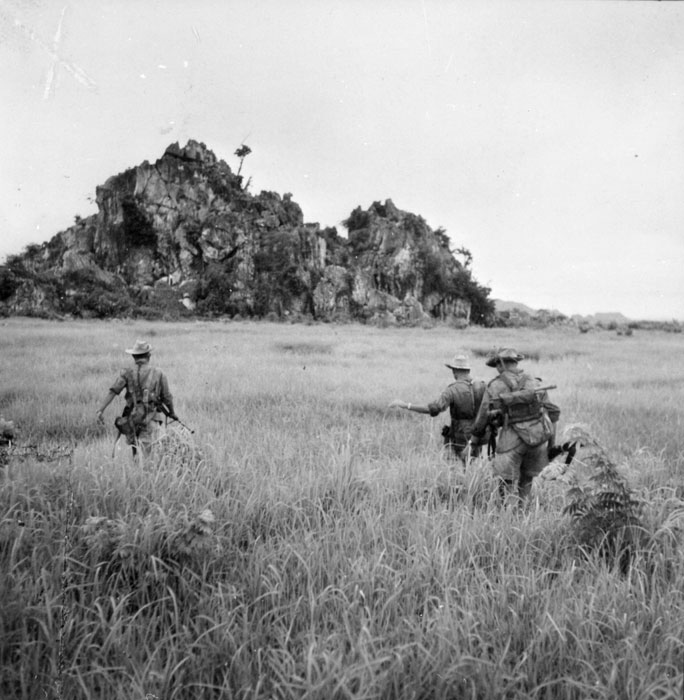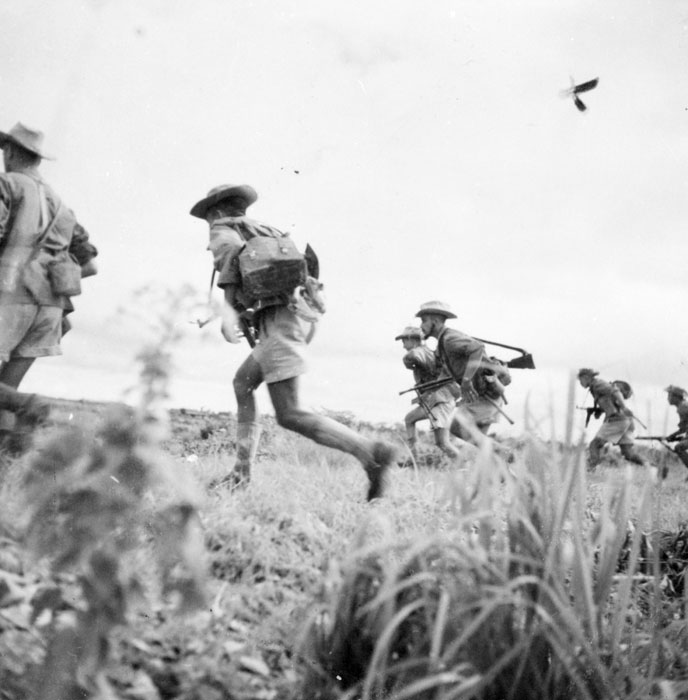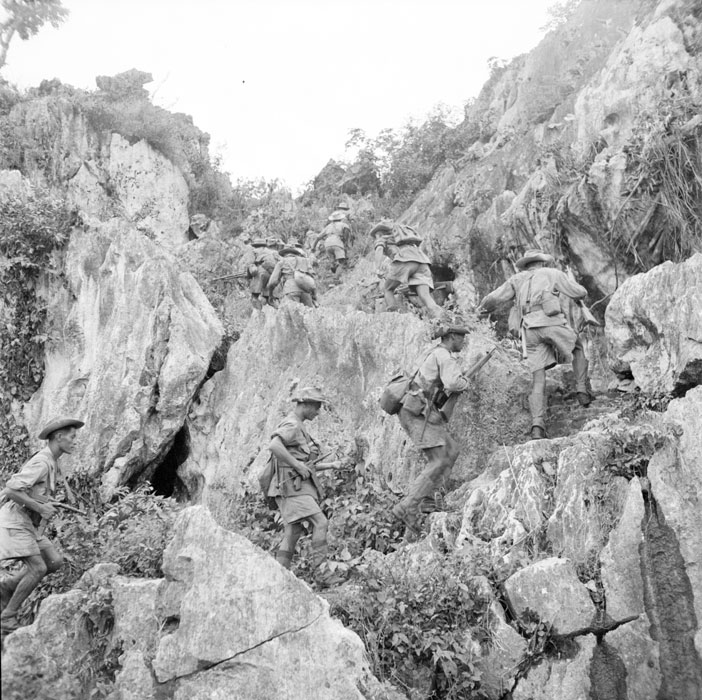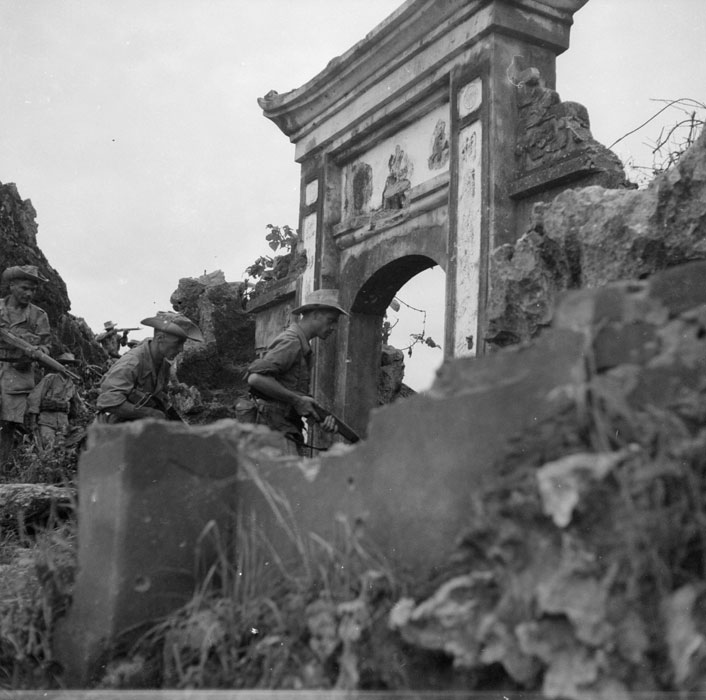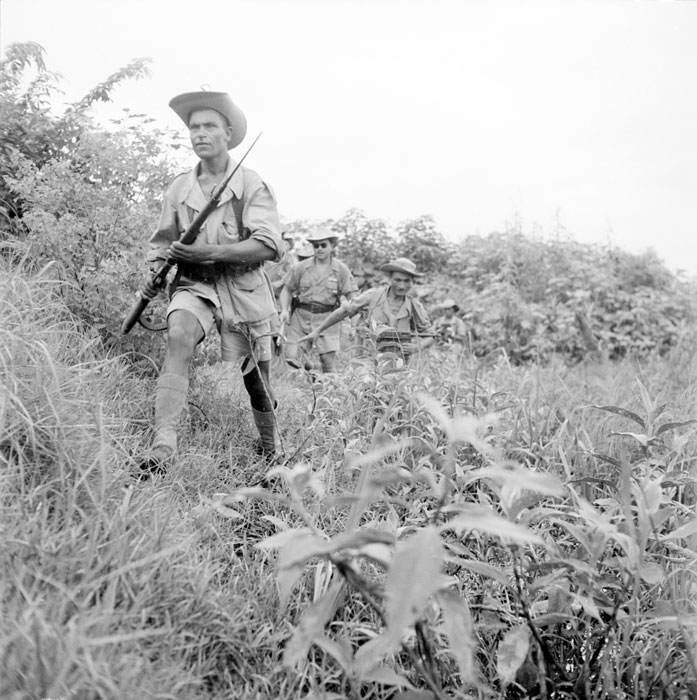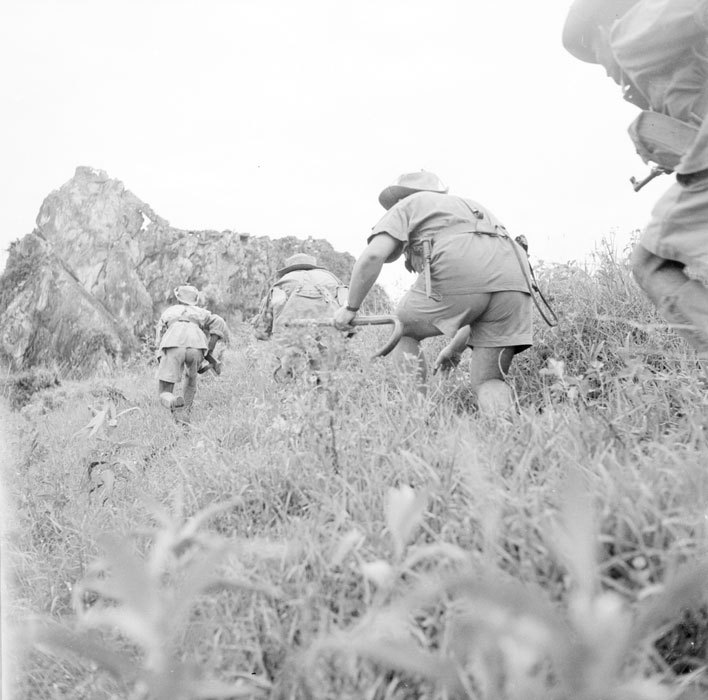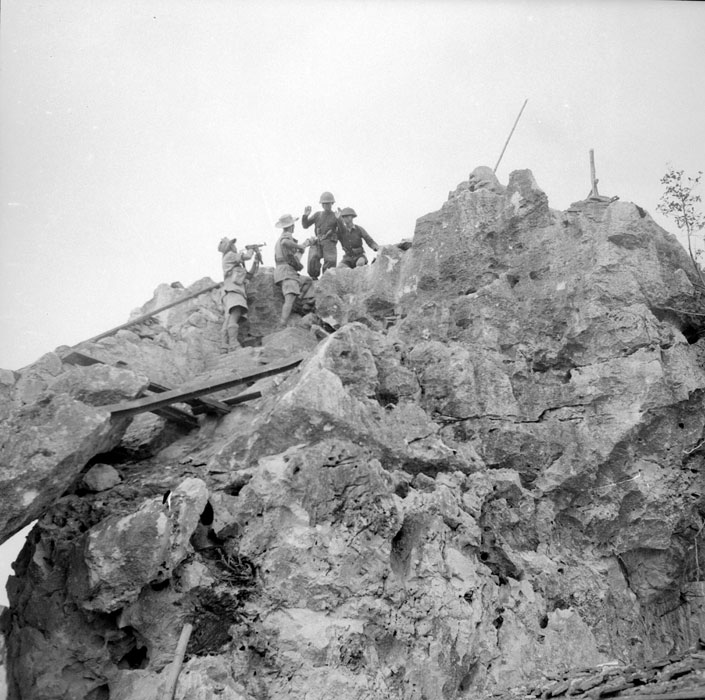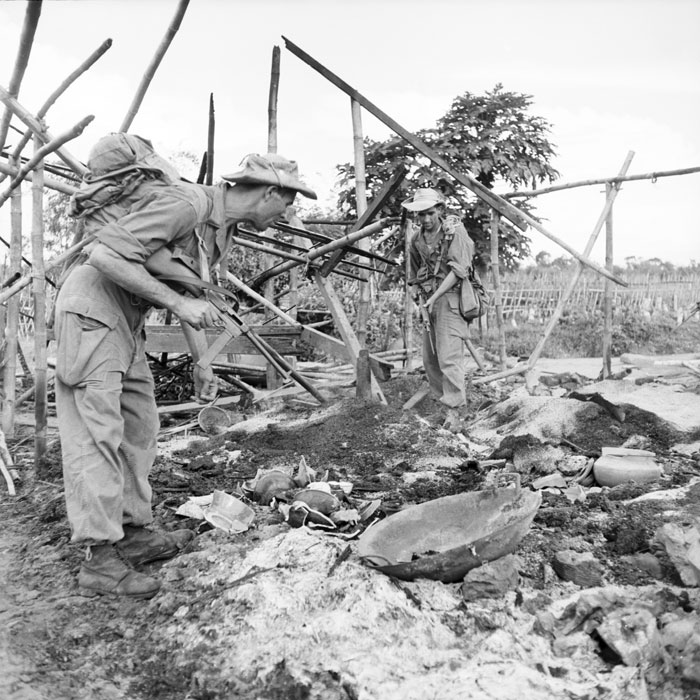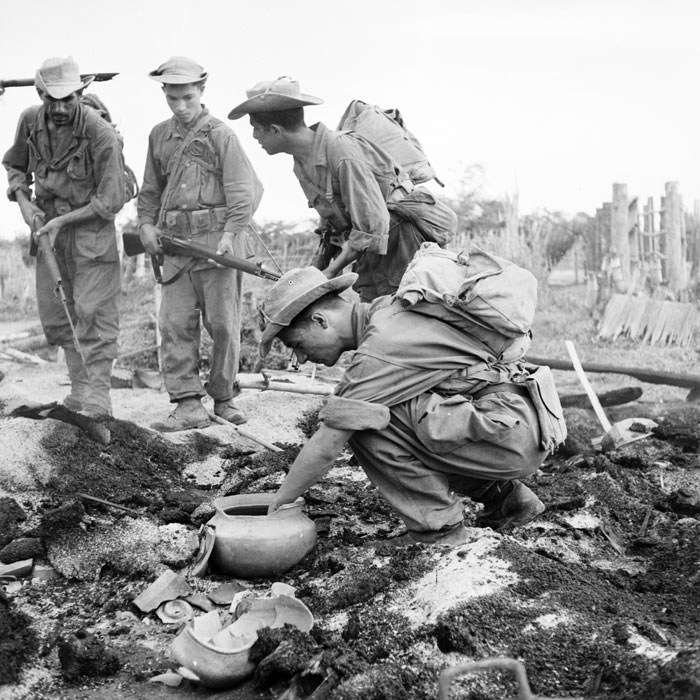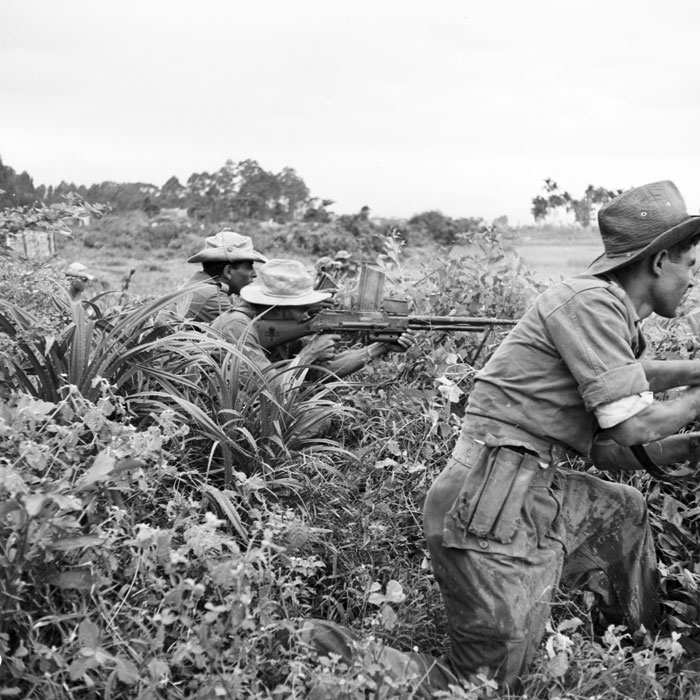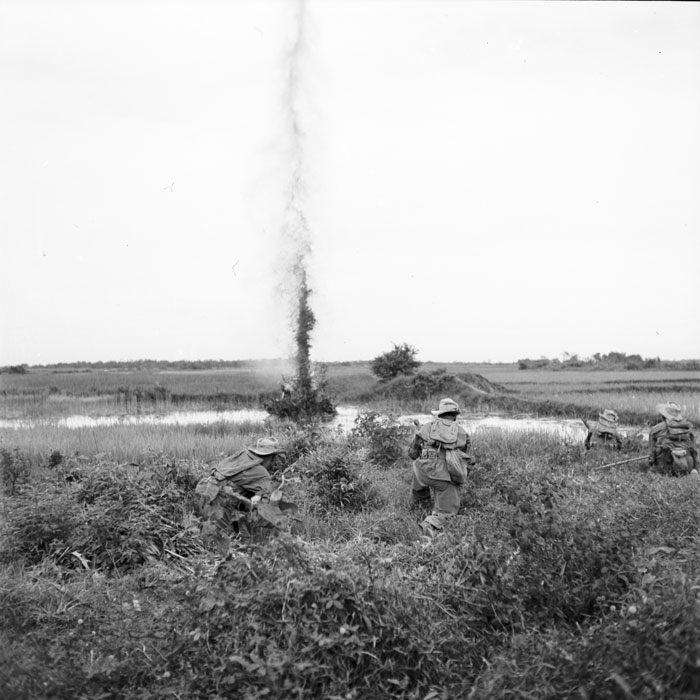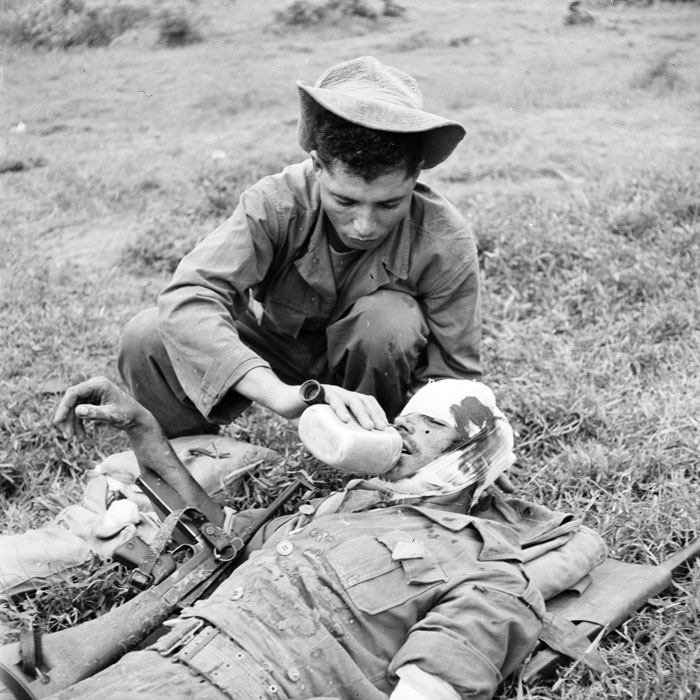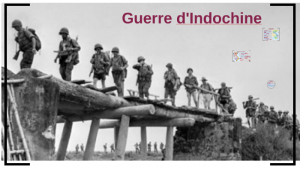- Joined
- Apr 2, 2017
- Messages
- 38,437
- Points
- 463
Wounded 2e BEP légionnaire being evacuated by a Hiller 360 helicopter during Operation Brochet, September 1953.
A 2e BEP command post was installed in a village. Among the equipment attached to the cabin, there is a US M1A1 folding stock rifle and an SCR 536 transceiver. A radio operator (standing) provides service to the PRC 10 transceiver station, which he carries on his back.
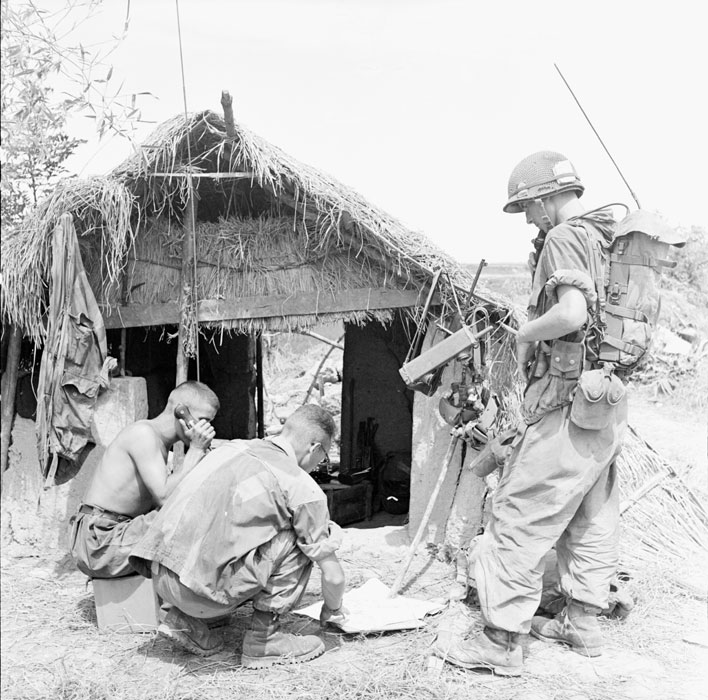
A 2nd class legionary-paratrooper, originally from Hanoi, of the 2nd CIPLE (2nd Compagnie Indochinoise Parachutiste de la Légion Étrangère / 2nd Indochinese Parachutist Company of the Foreign Legion), the company of native substitutes. He is dressed in a British "windproof" M1942 camouflage jacket, scaled and locally modified to his lower stature, nicknamed "peau de saucisson" ("sausage skin"). His US M1 helmet is modified "EO" (Extrême-Orient / Far East) by the addition of a locally produced jugular, making it suitable for skydiving.
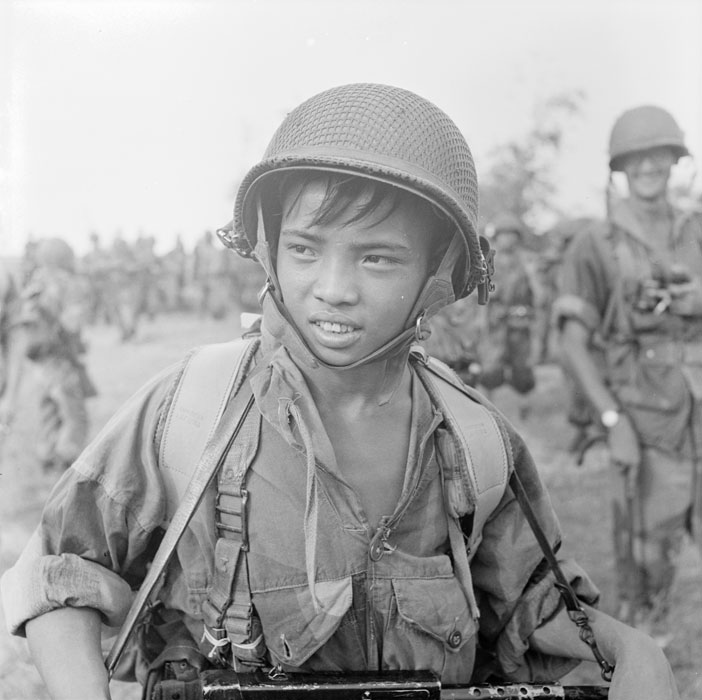
Legionaries of the 3rd battalion of the 5th REI during the operation. In the foreground, a legionnaire carries an OF 37 offensive grenade on his belt and a MAS 36 rifle over his shoulder. Behind him is a legionary with the venerable MAT-49 .

During the operation, 2E BEP legionnaires advance through a paddy field. The first carries his submachine gun in the "safe" position (magazine folded to prevent an accidental burst) and tucked a pack of cigarettes under his helmet's camouflage rubber band, instead of the usual bandage pack. He is followed by a marine machine gun with type 1924/29 Châttellerault .

Crossing a stream by parachutists from the 2nd BEP in the Hung Yen sector during the operation, the man from the center carries the MAS 36 CR39 parachute rifle with a folding stock .
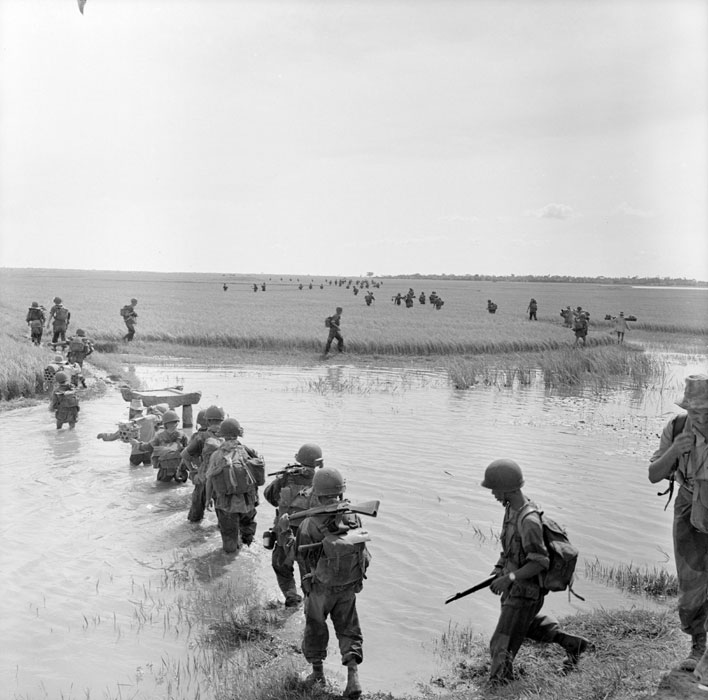
The tail of the same group crossing a stone marker in the stream.
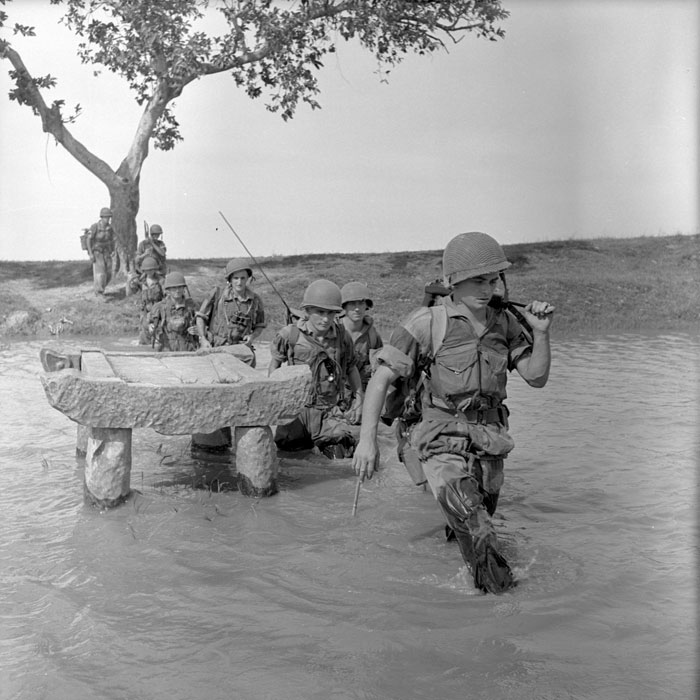
Paratroopers from the 2e BEP advance through the rice paddies.
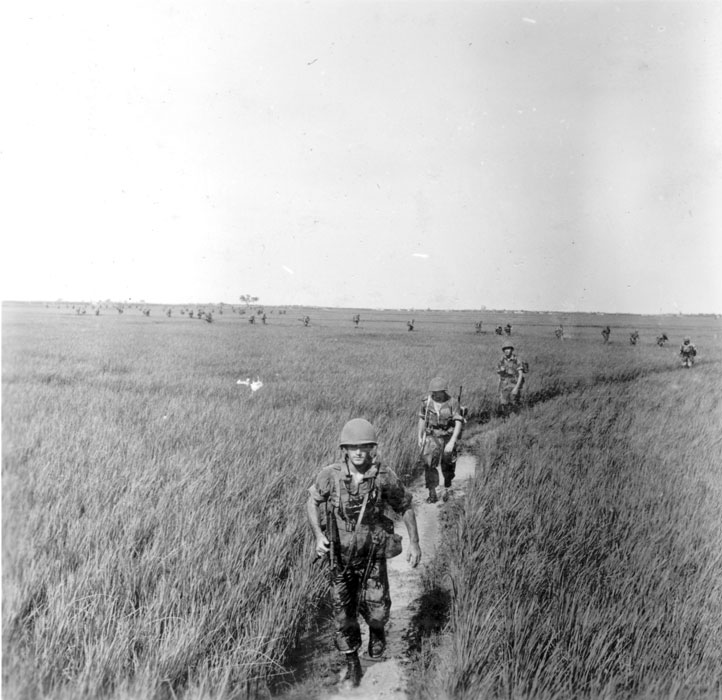
2e BEP legionnaires present a rudimentary but effective trap by Viêt-Minh, of which one has just been the victim: a board in which steel nails are nailed to the bottom of a hole dug under the water of a rice field or stream. Surprised as he went, the soldier heavily impales his foot on the ends, designed to aggravate the injury and prevent the device from being removed by simple traction.
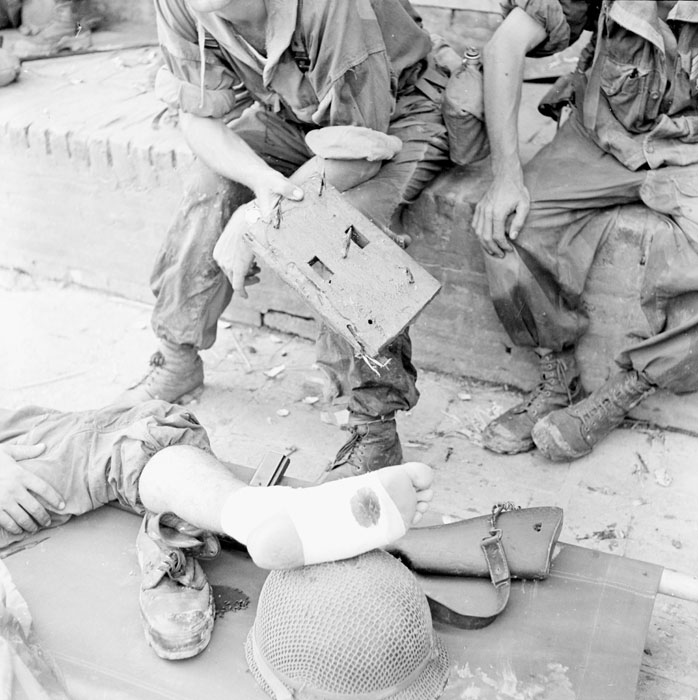
Trap with 15cm steel tips, developed by Viêt-Minh. The legionary posing next to him is wearing the famous French Pataugas jungle boots.
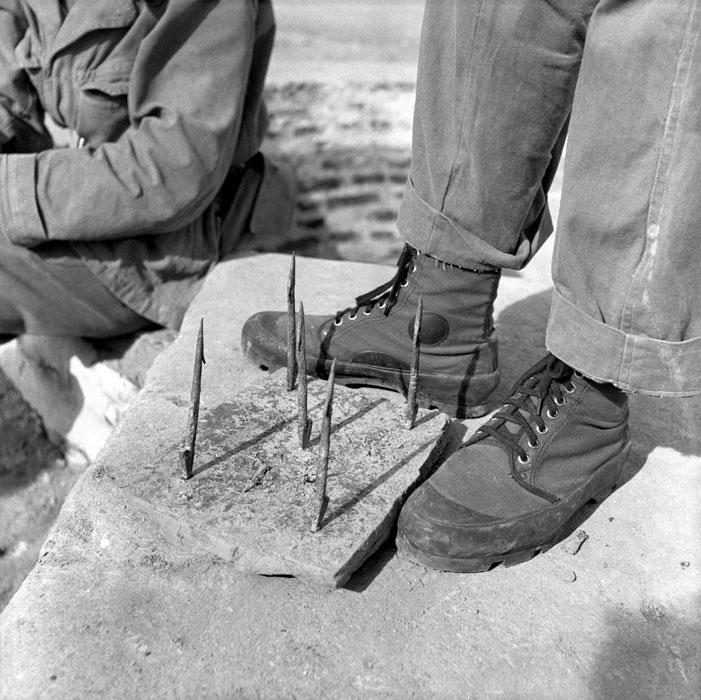

A 2e BEP command post was installed in a village. Among the equipment attached to the cabin, there is a US M1A1 folding stock rifle and an SCR 536 transceiver. A radio operator (standing) provides service to the PRC 10 transceiver station, which he carries on his back.

A 2nd class legionary-paratrooper, originally from Hanoi, of the 2nd CIPLE (2nd Compagnie Indochinoise Parachutiste de la Légion Étrangère / 2nd Indochinese Parachutist Company of the Foreign Legion), the company of native substitutes. He is dressed in a British "windproof" M1942 camouflage jacket, scaled and locally modified to his lower stature, nicknamed "peau de saucisson" ("sausage skin"). His US M1 helmet is modified "EO" (Extrême-Orient / Far East) by the addition of a locally produced jugular, making it suitable for skydiving.

Legionaries of the 3rd battalion of the 5th REI during the operation. In the foreground, a legionnaire carries an OF 37 offensive grenade on his belt and a MAS 36 rifle over his shoulder. Behind him is a legionary with the venerable MAT-49 .

During the operation, 2E BEP legionnaires advance through a paddy field. The first carries his submachine gun in the "safe" position (magazine folded to prevent an accidental burst) and tucked a pack of cigarettes under his helmet's camouflage rubber band, instead of the usual bandage pack. He is followed by a marine machine gun with type 1924/29 Châttellerault .

Crossing a stream by parachutists from the 2nd BEP in the Hung Yen sector during the operation, the man from the center carries the MAS 36 CR39 parachute rifle with a folding stock .

The tail of the same group crossing a stone marker in the stream.

Paratroopers from the 2e BEP advance through the rice paddies.

2e BEP legionnaires present a rudimentary but effective trap by Viêt-Minh, of which one has just been the victim: a board in which steel nails are nailed to the bottom of a hole dug under the water of a rice field or stream. Surprised as he went, the soldier heavily impales his foot on the ends, designed to aggravate the injury and prevent the device from being removed by simple traction.

Trap with 15cm steel tips, developed by Viêt-Minh. The legionary posing next to him is wearing the famous French Pataugas jungle boots.






